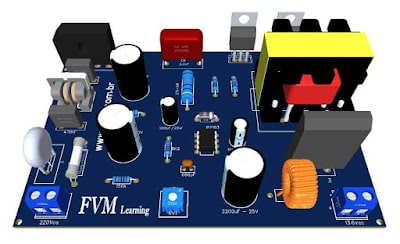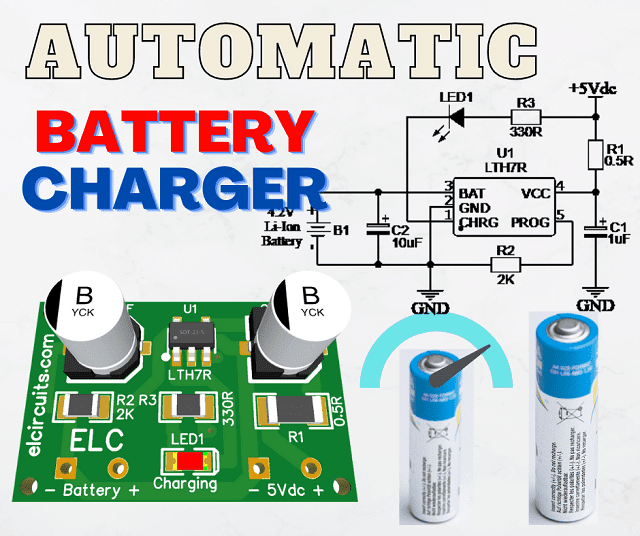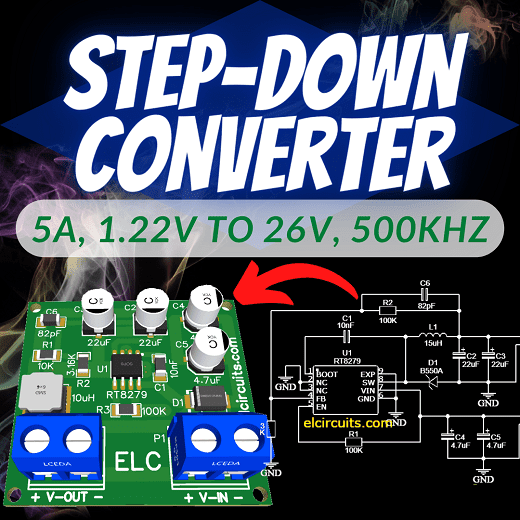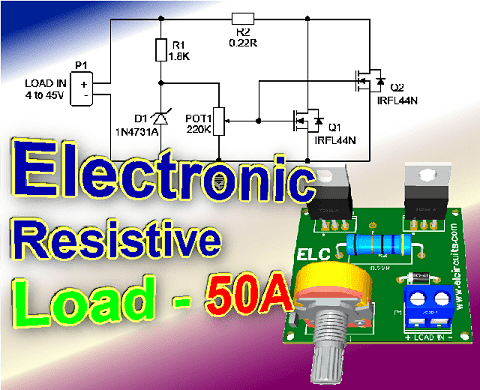 |
| 13.8V-SMPS-Power-Supply-Using-IR2153-IC-and-IRF840-Mosfet |
Switched Power Supply SMPS 13.8V 10A using IR2153 IC and IRF840, with PCB
This circuit is a straightforward design for an SMPS power supply, utilizing the IR2153 IC. This chip, which has only 8 pins, functions as a PWM controller, enabling the creation of a high-performing and cost-effective unregulated switching power supply for basic projects.
The output voltage of this power supply is set at 13.8V and can be adjusted via the trimpot RV1. It also provides a steady current of 10A at its output.
You may be interested in:
- 4A Low-Noise High-Frequency Step-Up DC-DC Converter using MAX1709 with PCB
- Adjustable Power Supply 1.5V to 28V, 7.5 Amps With IC LT1083 + PCB
- Adjustable Power Supply 1.2V to 37V, 6A, Short Circuit Protection with LM317 and TIP36 + PCB
- Adjustable Switching Power Supply 5.1 to 40V, 2.5 Amp using L4960 + PCB
- Symmetrical Adjustable Power Supply 1.25V to 47V 10 Amps with Short Circuit Protection + PCB
- Adjustable Power Supply 1.25v to 57V, 6 Amps with TIP36C + LM317HV + PCB
- Adjustable Power Supply 1.25v to 33V, 3 Amps with LM350 + PCB
- Stabilized Power Supply 13.8V High Current 10 Amps with PCB
The Circuit
The circuit basically consists of 8 main steps:
- Protection Circuit: It comprises a 5A/250V fuse, which operates if there is a current greater than the fuse's breaking current.At the same time we also have an NTC (Negative Temperature Coefficient), it is a surge current limiter, this same topology can be found in most SMPS power supplies, such as notebook power supplies, PC power supplies, computer AT / ATX power supplies, etc.
- Transient Filter: This step consists of an initial capacitive filter that inhibits high frequencies from returning to the network, or vice versa, and soon after, the EMI filter coil, which serves to attenuate high frequency noise.
- Primary Rectification: Made up of the D1 rectifier bridge.
- Primary Filter: Composed of capacitors C4 and C5.
- Switching: Composed of a PWM generator, and the IRF840 power MOSFETS transistors.
- Transformer: The transformer is a high-frequency Chopper Trafo, and it performs the isolation and high-frequency transformation of the signal generated by the PWM set and switching transistors.
- Fast Rectification: Formed by diode D3, this is a fast and double diode, since the oscillated frequency in the circuit is quite high.
- Output filter: Composed of inductor L2 and capacitor C9.
Caution
This circuit works directly connected to the electrical network, this is extremely dangerous, any carelessness, or wrong connections, design error, or any other occasion, can lead to irreversible damage.
We are not responsible for any type of occurrence. If you don't have enough experience, don't build this circuit, and if you build it, when testing it, be sure to have the proper protections and be accompanied by someone else.
The PWM Circuit
The power supply for the IR2153 IC comes through a 27K 5W power-limiting resistor together with the C5 capacitor. In the internal package of this IC, there is already a 15.6V Zener diode, which stabilizes this voltage, but the current is low.
So, be careful not to put the resistor R3 with a smaller resistance, as it would increase the current at the input of the IC, and the Zener could break and consequently burn the IC.
An improved solution would be to put a 15V Zener diode to ensure voltage stabilization and IC protection, which you can be doing if you wish.
If you are using the IR2153D, there is no need to use the D2 diode which is the FR107 or BA159, as this IC already has this diode internally, if it is the IR2153 “without the letter D”, leave it as it is in the schematic, “ with diode D2”.
The complete schematic diagram is displayed just below in Figure 2, both the diagram and the materials are available for download at the link below.
 |
| Figure-2-Schematic-Diagram-SMPS-13.8V-10A-power-supply |
The Transformer
The TR1 transformer was taken from a scrap ATX power supply, the model is the IE-35A, but you can be using practically any model of ATX power supply Trafo.
There is no need to rewind the transformer, just pay attention to the Pinout that we will use for the Trafo, as shown in Figure 3 below.
 |
| Fig.3-ATX-power-supply-Trafo-wire-connection-diagram |
The Trafo model used was the EI-35A, but we can also use any other AT or ATX power supply that has the same standards, such as models EI-33, ER35, TM3341101QC, ERL35, EI28, etc., as shown in Figure 4 below.
 |
| Fig.4-ATX-power -supply-transformer-model-EI-35A |
The L1 inductor is the same used in the ATX power supply, we removed it and didn't make any changes, and the L2 inductor, from the output EMI filter.
You can also use the AT/ATX power supply scrap, but if you want to wind your own filter, you can wind it on a Ferrite Toroidal core.
The winding must be carried out using a Toroidal core winding, with the coil using 0.6 mm super-enamelled copper wire with 25 turns.
Component List
- Semiconductors
- CI1 ......... Integrated Circuit IR2153D, or IR2153 (See Text)
- Q1, Q2 ... IRF840 MOSFET transistors
- D1 .......... KBU606 Diode Bridge (or Equivalent)
- D2 .......... FR107 or BA159 Fast Diode (or Equivalent)
- D3 .......... MBR3045PT Diodes Fast (or Equivalent)
- Resistors
- R1, R2 .... 150KΩ resistor - (brown, green, yellow, gold)
- R3 .......... 27KΩ 5W resistor – (red, violet, orange, gold)
- R4 ...........8K2Ω resistor – (gray, red, red, gold)
- R5, R6 ... 10Ω resistor – (brown, black, black, gold)
- RV1 ....... 47kΩ trimpot
- NTC1..... 5Ω thermistor
- Capacitors
- C1, C2 ... 470nF - 400V Polyester Capacitor
- C3, C4 ... 330uF - 200V Electrolytic capacitor
- C5, C7 ... 100uF - 25V Electrolytic capacitor
- C6 .......... 680pF Polyester Capacitor
- C8 .......... 2.2uF - 400V Polyester Capacitor
- C9 .......... 2200uF - 25V Electrolytic capacitor
- Miscellaneous
- L1, L2 .... Inductor *see text
- TR1 ....... Transformer *see text
- F1 .......... 5A Solderable fuse
- Other...... Wire, Solder, Plate, Etc.
Printed Circuit Board
We provide the PCB - Printed Circuit Board, in GERBER, PDF and PNG files. These files are available for free download, on the MEGA server, in a direct link, without any bypass.
All to make it easier for you to do a more optimized assembly, either at home, or with a company that prints the board. You can download the files in the Download option below.
Files to download, Direct Link:
You can see the official post by clicking here! fvml.com.br
I hope you enjoyed it!!!
If you have any questions, suggestions or corrections, please leave them in the comments and we will answer them soon.
Subscribe to our blog!!! Click here - elcircuits.com!!!
My Best Regards!!!





















